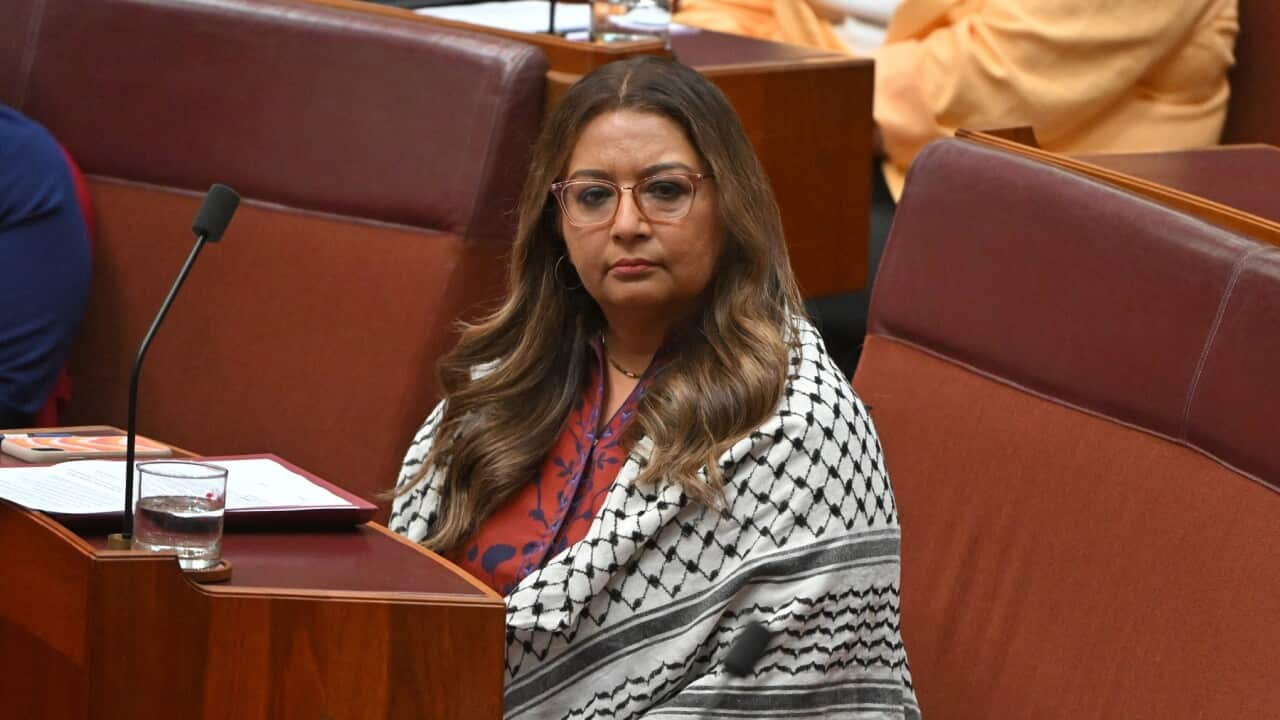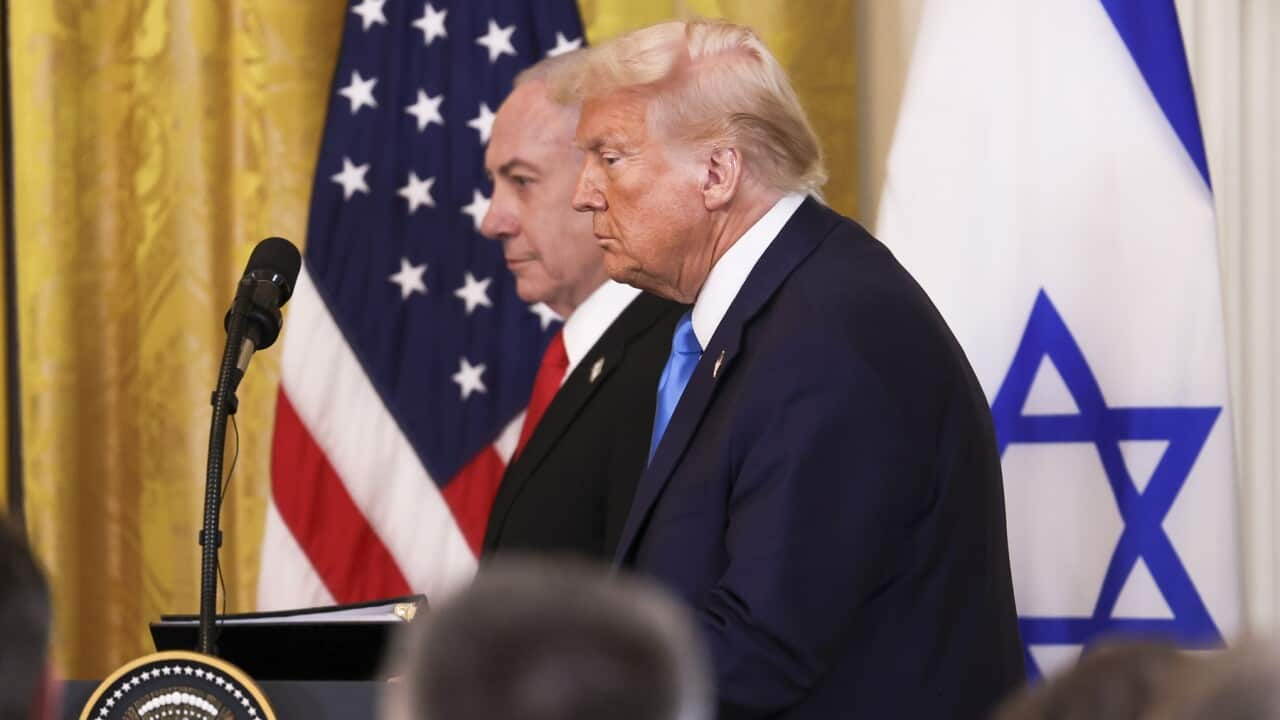TRANSCRIPT
Black and white scarves have been highly visible at pro-Palestine rallies in Australia and around the world, especially in the past month.
They come in different colours and embroideries like red and white, or just white.
They can be worn around the neck, over the head, or wrapped around a face.
The scarves are known to Palestinians as the ‘kufiya’ and since the start of the Israel-Hamas war they have become for many a symbol for resistance and independence.
Many protestors world-wide wear it as an act of solidarity.
Dr Anas Iqtait is an Australian National University lecturer at the Centre for Arab & Islamic Studies.
He says the kufiya has a deep connection to Palestinian identity that dates back centuries.
"Obviously the kufiyah is one of the most recognisable symbols of the Palestinian people. Both in terms of heritage and culture, and also in terms of plight, political plight and right of self-determination, and anti-colonial Palestinian movements and anti-occupation movements. So it both has this political symbol and as well as the cultural and heritage significance as well."
Where does the name kufiya come from?
While the garment is most readily identified with Palestinians, its origins lie further East, in what is known today as Iraq.
The word kufiya itself is connected to the Iraqi city of Kufa, south of Baghdad along the Euphrates River.
It's worn by many across the Arab world, and known by many names such as the 'hatta' in the Levant dialect, and 'ghatrah' in the Gulf region.
Dr Iqtait explains that the garment was initially worn mostly by farmers.
"Perhaps even prior to the Ottoman period, the kufiya also resembles much of the attire that is worn across the Arabian Peninsula and across the Arab world. And it is at the most basic level, obviously, its purpose is to protect from the sun and also from excessive winds, and provide protection for farmers as they were basically working the fields."
It was during the Arab Revolt against British colonial rule in 1936 that it started to gain broader popularity.
“The kufiya was standardised, across both the urban and (agricultural) communities in Palestine as a symbol of unity, and a political statement against the British colonisation of Palestine.
Then came the Nakba, which means “catastrophe” in Arabic, the mass displacement and dispossession of Palestinians during the 1948 Arab-Israeli war.
The State of Israel was established after World War Two and by the 1960s, the Palestinian resistance movement had strengthened.
Wearing the kufiya for the Palestinian people became a symbol of resistance, aided by then-Palestinian leader Yasser Arafat who helped popularise the kufiyah to a global audience.
Yasser Arafat was a joint Nobel peace prize winner who led the Palestine Liberation Organisation to a peace agreement with the Israeli government in 1994.
From 1996 until he died in 2006, he was the president of the Palestinian Authority.
Throughout his time as a Palestinian leader he would often would wear the kufiya, with some saying he shaped the front of it in a triangular fashion to represent the map of Palestine.
So what is the kufiya’s design?
Academics say the kufiya’s embroidery and designs have symbolic meaning to Palestinian culture.
The black leaves around its frame represent the leaves of the olive tree to represent resilience, strength and courage.
The fishing net pattern symbolises the Mediterranean and the Palestinians whose livelihoods depend on fishing.
The broad line depicts the trade routes that passed through the region, and symbolise a long history of trade, travel and cultural exchange.
Despite the political connotations of wearing the garment during a time of war, Dr Iqtait says the kufiya's rich history shouldn't be forgotten.
"It is a political symbol, it does signify solidarity with Palestinians, it does symbolise the plight of the Palestinians. But at the same time, it's also goes beyond that - it's a cultural symbol that Palestinians have been wearing and using for a very, very long time."













